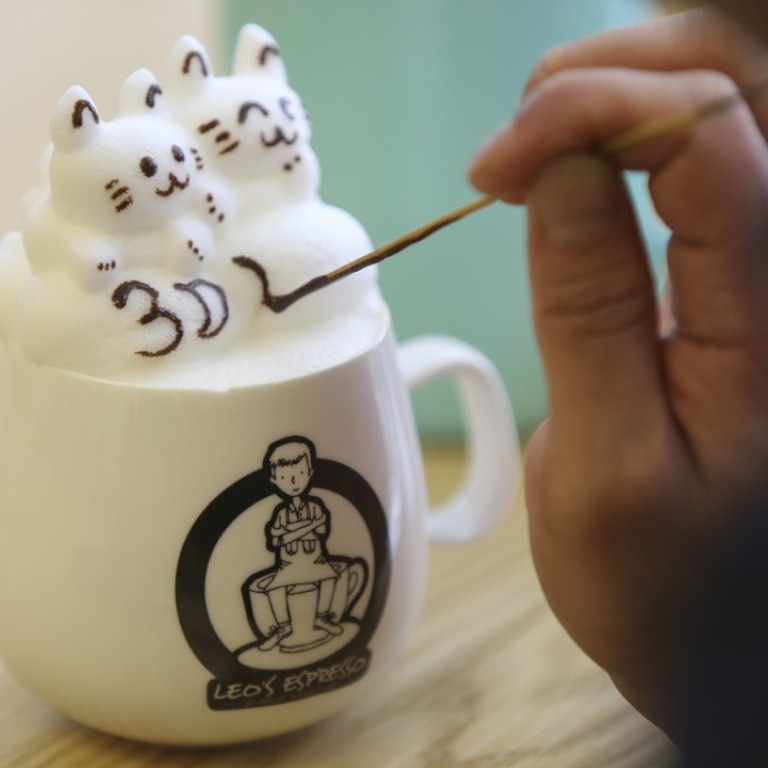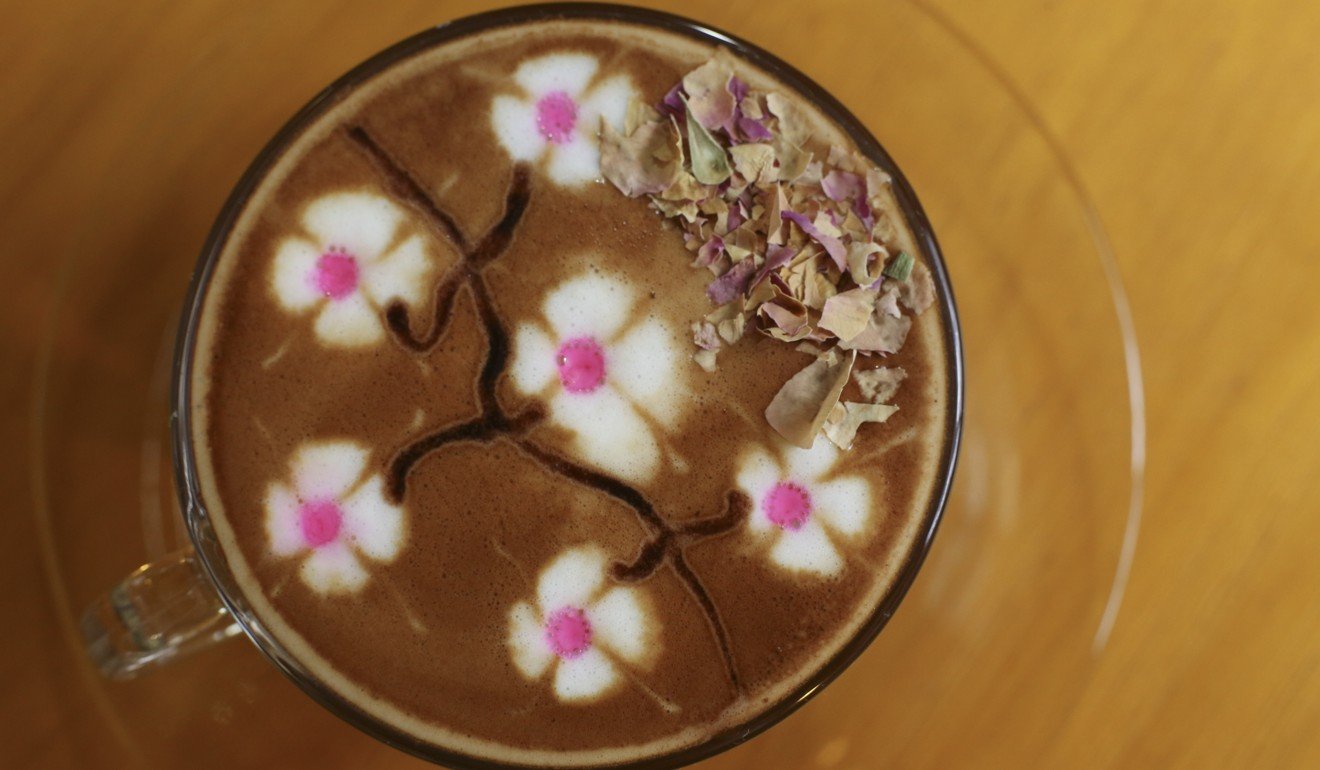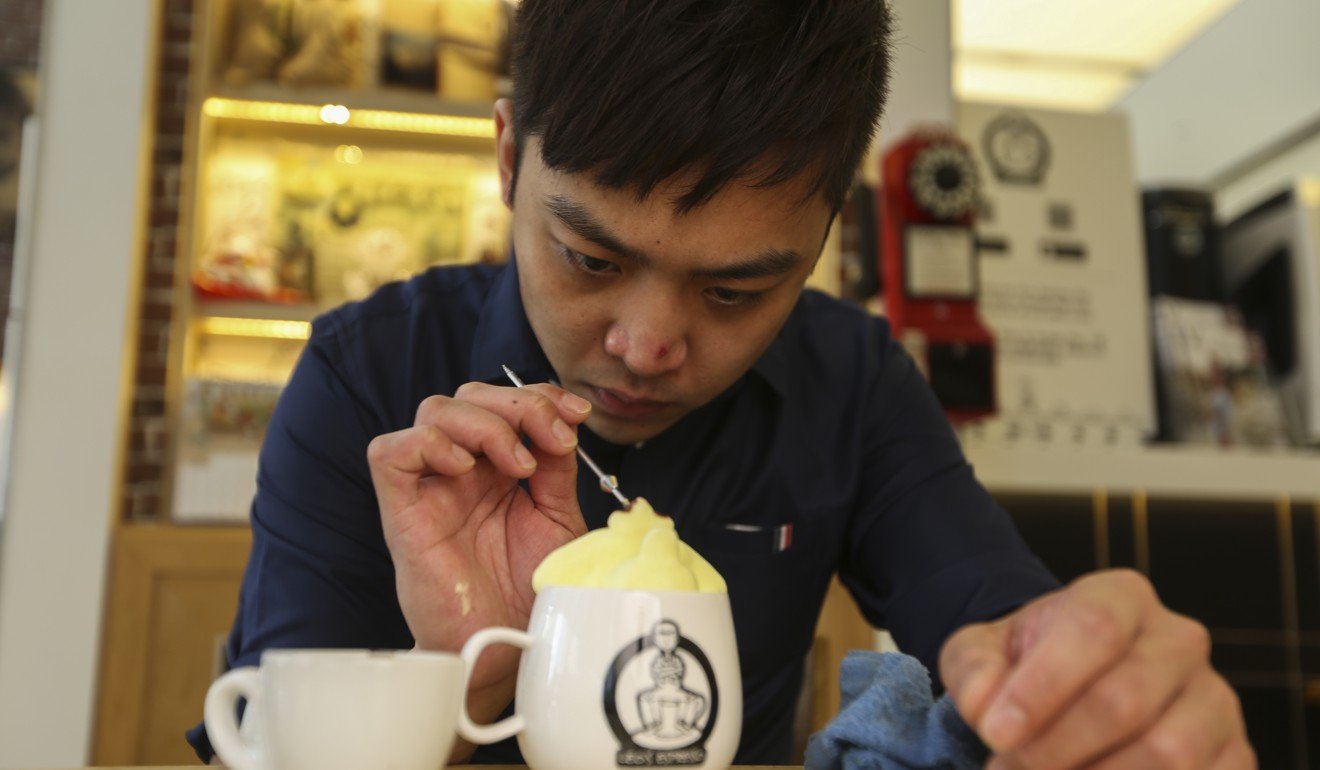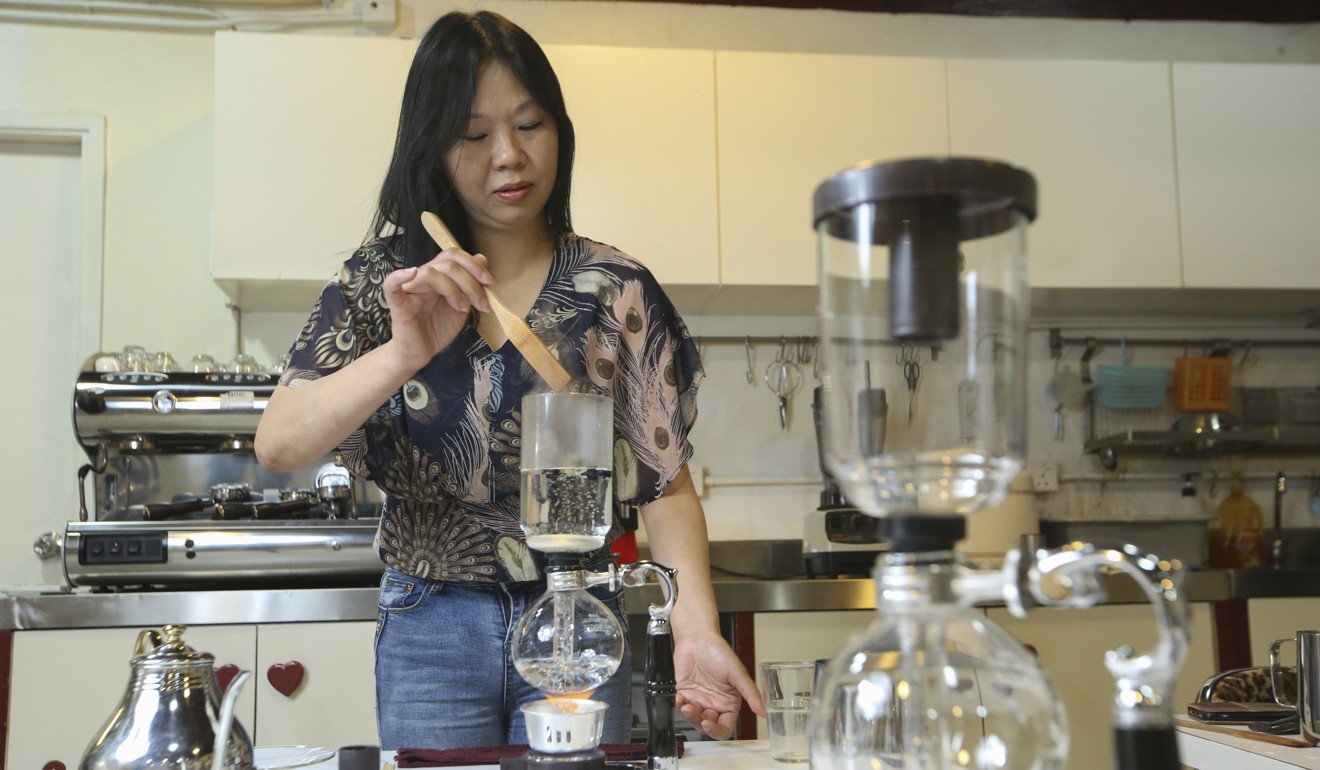
Hong Kong 3D latte artist takes milk foam to the next level
The coffee shops setting themselves apart from the competition, with ingenious coloured latte art to decorate their artisanal brews
The interior of Leo’s Espresso in Admiralty is decorated with cartoons depicting its proprietor, Leo Chau Tsz-leung. “They tell my life story and its big transitions – how I went from being a manual labourer to renovation worker, transport worker, waiter, coffee shop worker, barista and finally coffee shop owner,” he says.
The art is not confined to the walls of his coffee shop, though. Leo’s Espresso, with another branch in Kwai Hing, is known for its 3D latte art of colourful kittens. Chau’s is one of a few independent cafes in Hong Kong that aim to set themselves apart from the chains by creating original and highly Instagrammable latte art.
Although 3D latte art originated in Japan, Chau claims he was the first barista in Asia to add colour to his creations after discovering edible pigments that blend with the foam without changing its texture.
He first came across the frothy coffee feature when a colleague at a Tsim Sha Tsui cafe showed him a photo of simple 3D latte art kitten from Taiwan. Chau decided to see if he could do it better, and taught himself to create cats that look cuter and more lifelike.

Chau says his coffee creations also gave him a second life. “I used to be a drug addict, and 3D latte art gave me with an opportunity to overcome my past. I was born on an outlying island, but after becoming an addict I left. Later, even when I’d turned my life around, I knew no one would just take my word for it, so I thought maybe 3D latte art could help me prove that I was a changed person,” he explains.

cartoon characters – including Minions, Pokemon, Totoro, Hello Kitty and Snoopy – and portraits.
“Our name R&C actually means Reading and Coffee,” Ho says. “We hope to create a quiet and comfortable space for people to read at leisure while drinking coffee.
“I’m a post-’90s guy, so like many teenagers I used to be fascinated with cartoon drawing. That’s why, two to three years ago, I thought I might be able to come up with something cuter and more animated. But over time, as I’ve seen and experienced more in life, I’ve begun to prefer more mature and artistic images, such as portraits and landscapes.

Sometimes Ho asks customers for requests. A woman celebrating an anniversary with her boyfriend once gave him a photo of the couple and asked if he could draw their portraits on two cups of coffee. It was his first attempt at latte portraiture and the request inspired him. “I always try to satisfy the wishes of customers because I want them to leave happy, as implied by our slogan: ‘Come as a guest, leave as a friend’,” he says.

May Man Kwai-fong, the owner, says the outdoor seating on the green campus attracts many students, teachers and even visitors.
Man says floral art is relatively quick to draw, and that means the coffee won’t go cold. “Although it’s easier to draw flowers, the effect is surprisingly impressive.”
She says latte art is Cafe Car’s big attraction, constituting more than 80 per cent of its revenue. “Everybody who queues at our truck is waiting for our latte art. Many teenagers are like: ‘Oh! Camera eats first.’”
Arty lattes account for about 50 per cent of Cafe R&C’s income, Ho says. It’s not big business for Leo’s Espresso, though. The special coffees account for only about 20 per cent of total income in Kwai Hing, and 10 per cent in Admiralty, according to Chau.
Nevertheless, Chau insists it’s on the menu to stay because it makes his customers happy. “I’ve heard customers saying: ‘Oh, I feel really relaxed when I see this coffee.’ So, 3D latte art is psychologically healing, relieving pressure.”
There are basically two ways of making latte art: free pouring – for simple pictures, such as leaves and hearts – and etching.
When steaming the milk to make the foam, it’s important to keep the temperature at between 60 and 70 degrees Celsius. “If it’s too hot, you can’t create foam; if it’s too cold, the coffee will not taste good. If the milk is poorly steamed, it’s impossible to make latte art. The foam has to be very smooth,” Man says.
Free pouring requires a steady wrist and good hand coordination, because the barista needs to hold the cup in one hand and use the other to pour the milk. Etching needs a steady hand to create the picture with a latte pen, while adding edible pigments.

Despite its attractiveness, latte art is “a temporal beauty”, Man says, so however pretty it may look, the quality of the coffee is equally important.
Ho agrees: “If the coffee tastes bad, even if the latte art is really beautiful, I would still pour it down the toilet. So, no matter how pretty your latte art is, your customers won’t return to your shop if the quality is poor,” he says.
“To be a good barista, primarily you need to know how to make coffee that tastes good, because the taste is far more important than the appearance,” Chau says.
Running an independent cafe can be difficult because of the competition from the dominant coffee shop chains, especially Starbucks and Pacific Coffee.
“Their brands are more famous, and they have special offers … such as buy one get one, which puts pressure on small specialist coffee shops like us,” Chau says.
Ho points out that the larger operators have highly polished marketing promotions, which can lure customers away from small businesses.
However, the three baristas agree that both big and small players have their own strengths and weakness.

Man reckons her coffee is better than that sold by the big chains because “we ensure that our coffee beans are roasted and served to customers within just one week”.
Independent cafes tend to have closer relationships with customers, Man says: “When our customers queue up in front of our truck, they love watching the barista making the latte art and chatting ... In the mainstream coffee shops, the bars are usually very high and customers can’t really see what the baristas are doing.”
Whether or not latte art is a passing trend is open to debate.
“So long as you keep trying new things, looking around and learning from others, instead of ... glorifying yourself as the ‘king of the world’, you’ll easily get inspired with new ideas,” Ho says.
Coffee has a thousand-year-long history and is one of the world’s biggest industries, so there must be a future in it, Man says.
Chau doesn’t regard latte art – including his work in 3D – as a fad. “I don’t think we can call it a trend because it [the 3D form] has been popular for six years already and that isn’t a short period of time. I’d call it an art form and culture because you can’t just mechanically produce it using a printer. It can’t be replaced by machines.”
